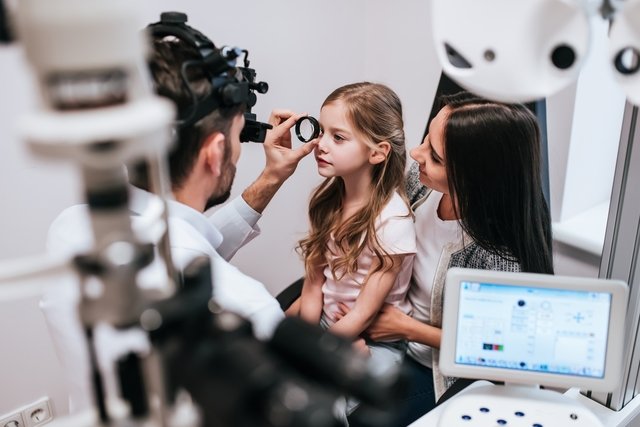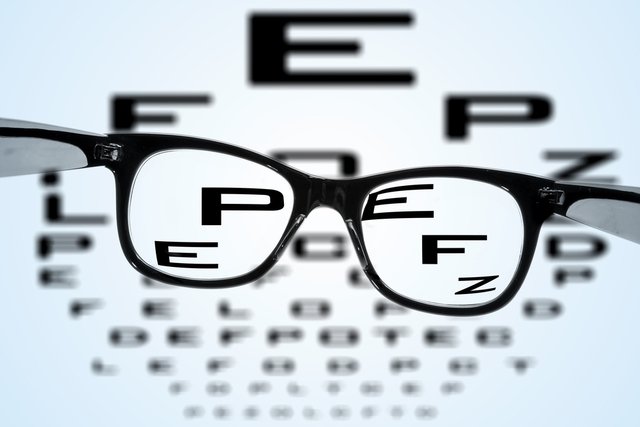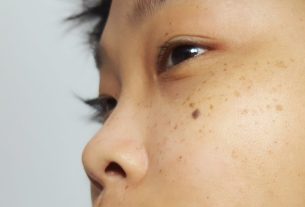Myopia is a change in vision in which it is difficult to see objects from a distance, causing blurred vision, frequent headaches, pain in the eyes, the need to squint to see objects that are further away and tiredness after reading, for example .
This change happens when the distance between the back of the cornea and the retina is increased, resulting in difficulty in focusing on objects, especially those that are further away, and it is important to consult an ophthalmologist for a vision assessment to be carried out.
Myopia is hereditary and, generally, the degree increases and can stabilize between 18 and 30 years of age, regardless of the use of glasses or contact lenses, which only correct blurred vision and do not cure myopia. Thus, to cure myopia, depending on the degree of change, the doctor may recommend surgery, which is usually done with a laser.

Myopia symptoms
The main symptoms of myopia are:
- Difficulty seeing from a distance;
- Frequent headache;
- Constant pain in the eyes;
- Need to squint your eyes to try to see more clearly;
- Write with your face very close to the table;
- Difficulty reading on the board at school;
- Not seeing traffic signs from afar;
- Excessive tiredness after driving or reading, for example.
Symptoms of myopia can appear in childhood, which usually happens around the age of 8, and may worsen during adolescence. In the presence of signs and symptoms of vision problems, it is important that an ophthalmologist is consulted so that tests can be carried out to help identify the change in vision.
Degenerative myopia symptoms
The first symptoms of degenerative myopia include an eye that is more out of its orbit, poor distance vision even with glasses or contact lenses, a permanent increase in pupil size, black areas, flashing lights or black spots in the field of vision.
However, this vision problem can progress very quickly when not properly treated, progressing to permanent blindness in the most serious cases.
How is the diagnosis
The diagnosis of myopia is made by the ophthalmologist by carrying out a visual acuity exam, in which tests are carried out with the aim of verifying the person’s ability to see more or less distant letters, which is adjusted according to the size they are. presented. See more details about the ophthalmological exam.
From this exam, the doctor can check whether the person has myopia or other vision changes, as well as the degree of myopia. In general, when it is up to 3 degrees, myopia is considered mild, when it is between 3 and 6 degrees, it is considered moderate, and when it is above 6 degrees, it is severe myopia.
Make an appointment with the nearest ophthalmologist for a more detailed assessment of your eyes:
Taking care of your health has never been easier!
Main causes
Myopia can occur due to genetics or be influenced by other factors, such as low light, long periods of reading, medication use, diabetes and excessive accommodation, as well as situations related to the mother, such as late pregnancy and smoking during pregnancy.
Types of myopia
According to the change observed in the eye and its cause, myopia can be classified into the following types:
- Miopia axial: appears when the eyeball is more elongated, with a length greater than normal. It generally causes high degree myopia;
- Curvature myopia: it is the most common, and occurs due to an increase in the curvature of the cornea or lens, which generates images of objects before the correct location on the retina;
- Congenital myopia: occurs when the child is born with eye changes, causing a high degree of myopia that remains throughout life;
- Secondary myopia: it can be associated with other defects, such as nuclear cataract, which causes degeneration of the lens, after trauma or glaucoma surgery, for example.
When the eye is smaller than normal, there may be another vision disorder, called hyperopia, in which images are formed after the retina. Learn more about hyperopia.
How the treatment is carried out
Treatment for myopia must be indicated by the doctor according to the degree of change that the person has. In most cases, the use of glasses or contact lenses with spherical lenses is recommended to help focus the light rays, placing the image on the retina of the eye, improving visual capacity.
However, when the use of glasses or lenses is not sufficient and the degree increases over time, myopia surgery may be indicated, and is recommended from the age of 18, when the degree is already more stabilized. The surgery is performed using a laser that is capable of shaping the natural lens of the eye so that it focuses the images in the correct location, reducing the need for the patient to wear glasses. Understand how myopia surgery is performed.
Bibliography
- SILVA, JAILTON V.; FERREIRA, BRUNO FA; PINTO, HUGO SR Refractive disorders and presbyopia. 2013. Available at: <http://www.ligadeoftalmo.ufc.br/arquivos/ed_-_disturbios_refrativos_e_presbiopia.pdf>. Accessed on Sep 14, 2021
- AMERICAN ACADEMY OF OPHTALMOLOGY. Nearsightedness: What Is Myopia?. Available at: <https://www.aao.org/eye-health/diseases/myopia-nearsightedness>. Accessed on Sep 14, 2021






